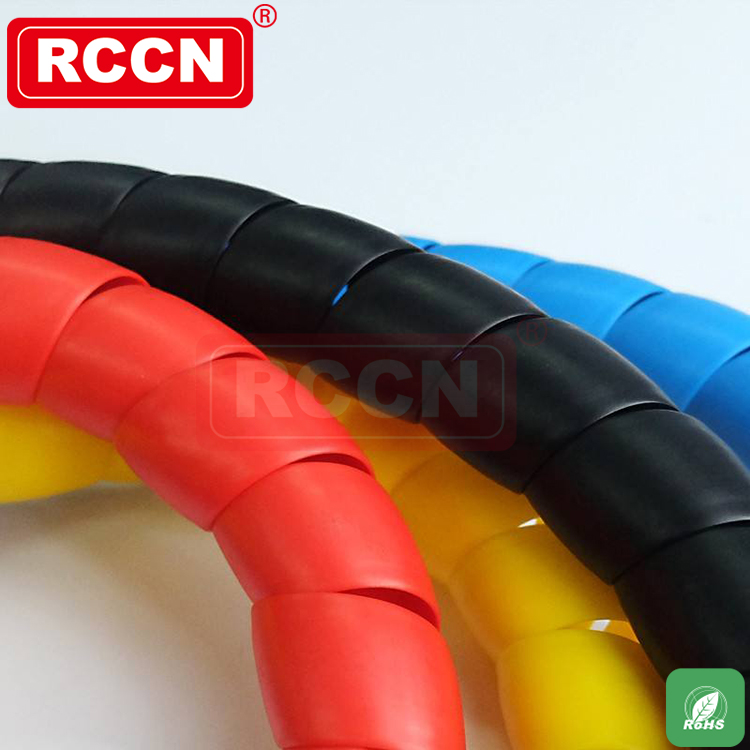
Spiral protective sleeve
Material: Using modified pp raw materials specially developed by Shanghai Rubber Research Institute
Process: Extrude first and then shape
Shape: spiral
Size: can be customized according to customer requirements
Flame retardant: V0 level, extinguished immediately after leaving the fire source
Color: black, red, yellow, blue, white, other colors can be customized (customized colors require color numbers or samples, and there are order quantities required)
Features: wear resistance, aging resistance, oil resistance, acid and alkali resistance, sun protection, etc.
Application fields: Used in construction machinery such as excavators, loaders, road rollers, forklifts, cranes, and financial machines, as well as forest logging machinery and agricultural machinery.
Uses: Mainly installed on the outside of hydraulic hoses, tubing, cables and other products to protect them from bumps, sun exposure, and corrosion. In various harsh environments, it can protect the internal products, ensure the safety of construction, and extend the service life of the hose and cable.
Protective cover is a collective term for spiral protective cover, hose protective cover and plastic protective cover. It is widely used in various machinery and agricultural machinery and equipment. Its main function is to protect the safety of the gasoline, electricity and gas pipelines of the vehicles mentioned above, avoiding wear and bumps. Improve the service life of pipelines and ensure the safety of construction operations.
So how to choose a suitable protective cover, and what are the precautions when buying?
Observe the surface
The surface of the spiral sheath should be smooth and flat without material shortage, cracks and burrs. From a professional point of view, the better the polypropylene raw material, the smaller the molecular weight, and the more delicate and smooth the surface of the produced product. So if you find the surface of the spiral protective sleeve is uneven, burrs, protrusions, etc., then it is likely to be a spiral protective sleeve made of recycled rubber or polypropylene mixed with this recycled material.
Feel the hardness
The hardness of a good protective sleeve is generally 85-90 degrees Shore. Any deviation from this range does not meet the requirements. The hardness is too low to protect and restrain the inside of the pipeline. The hardness is too high, and the protective sleeve is prone to brittle cracks in low temperature environments (such as parts of northern my country), which cannot meet the requirements of use.
Distinguish the taste
The raw material used in the production of the spiral protective sleeve is colorless and tasteless, and its color is produced by adding color masterbatch during the production process. Then why does some spiral protective sleeve have a pungent smell? After recycling waste rubber, it needs to be crushed and rebuilt. Other chemicals are added in the process, coupled with a series of processing processes, it will have a pungent smell.
Applicable scene

















 RCCN WeChat QrCode
RCCN WeChat QrCode Mobile WebSite
Mobile WebSite